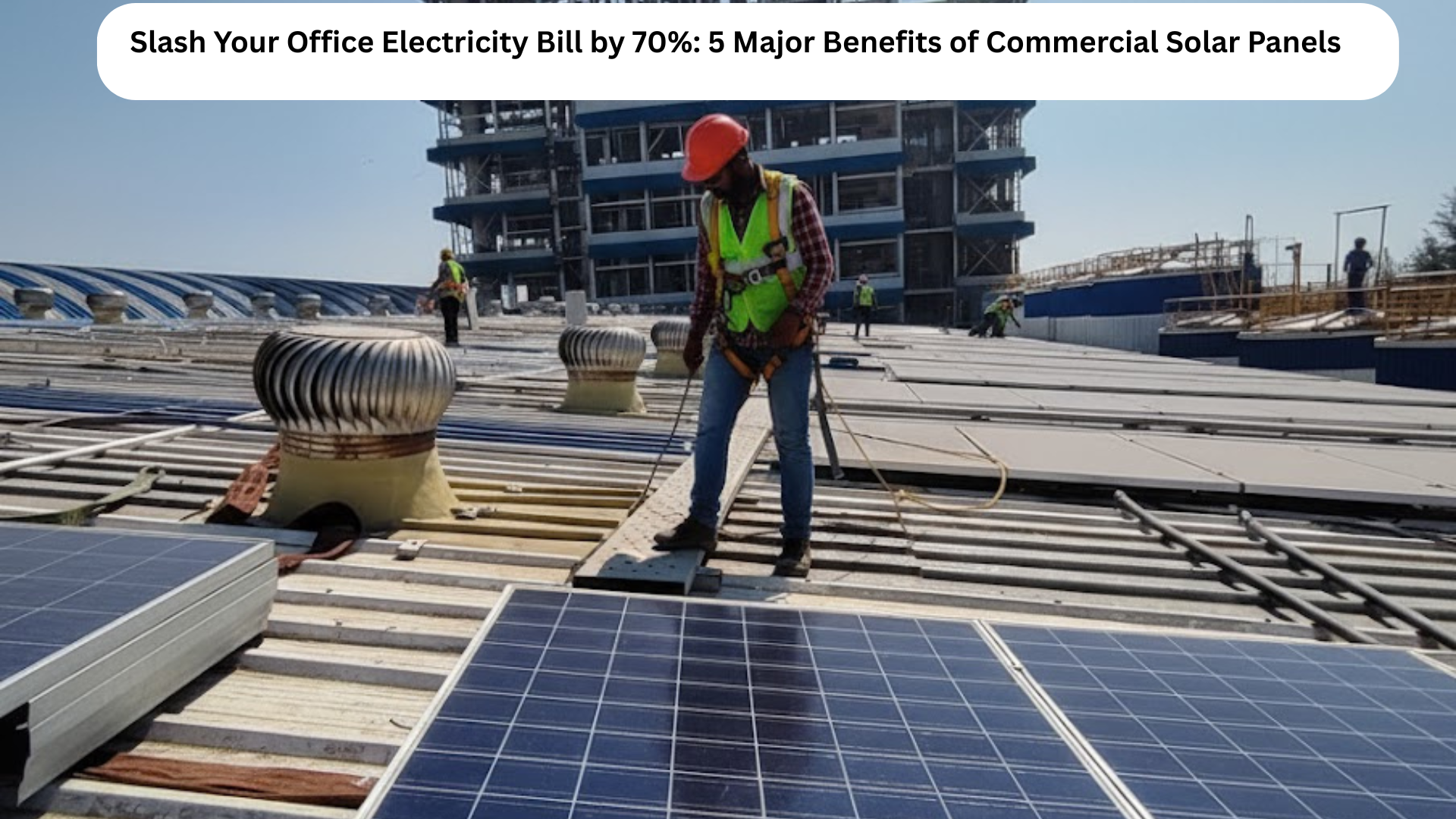Look up at the rooftops as you navigate the vibrant streets of Jaipur. Amidst the iconic terracotta pink, you’ll notice a new colour defining the city’s skyline: the deep, shimmering blue of solar panels. It’s not just a fleeting trend; it’s a silent revolution. The rooftop solar growth in Jaipur is accelerating at an unprecedented pace, transforming the Sun City into a true powerhouse of clean energy.
But what’s fuelling this incredible surge? Why are thousands of homeowners, from established colonies in C-Scheme to the new developments on the Ajmer Road, making the switch?
It’s a perfect storm of compelling financial incentives, rising energy costs, technological breakthroughs, and a collective desire for a sustainable future. If you’re a Jaipur resident tired of unpredictable electricity bills and curious about energy independence, this in-depth guide is for you. Let’s explore the five foundational pillars driving this solar movement.
1. Powerful Government Subsidies Make it More Affordable Than Ever
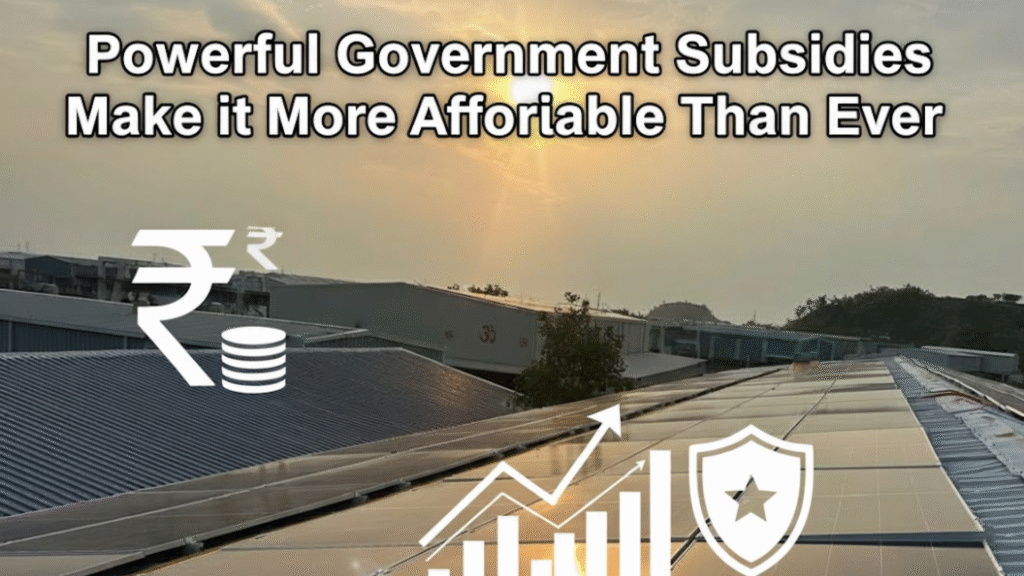
For years, the primary barrier to solar adoption was the initial investment. Today, that barrier has been significantly lowered, thanks to proactive government policies. The star of the show is the recently launched PM Surya Ghar: Muft Bijli Yojana, a scheme that has fundamentally changed the financial equation for homeowners.
This isn’t just a minor discount; it’s a direct, substantial financial subsidy that makes solar accessible to a much broader audience. The scheme is designed to be simple and impactful.
How the Subsidy Works: The subsidy is linked to the capacity of the solar system you install on your roof. The current structure under the national portal is clear and generous:
| Rooftop Solar System Capacity | Subsidy Amount |
| First 2 kW | ₹30,000 per kW (Total ₹60,000) |
| For the 3rd kW | An additional ₹18,000 |
| Maximum for a 3 kW System | ₹78,000 |
| Systems above 3 kW | Capped at ₹78,000 |
Let’s put this into perspective with a real-world example: Imagine the Sharma family in Mansarovar, who have a typical 3BHK home and an electricity bill that often crosses ₹4,000 in the summer. They decide to install a 3 kW rooftop solar system. The total project cost from a reputable installer is approximately ₹1,70,000. Under the PM Surya Ghar Yojana, they are eligible for a flat ₹78,000 subsidy. This brings their net investment down to just ₹92,000. Suddenly, a long-term infrastructure investment becomes an immediate, affordable home upgrade. This powerful incentive is the single biggest catalyst for the explosive rooftop solar growth in Jaipur.
2. The Unavoidable Pinch of Rising Electricity Bills
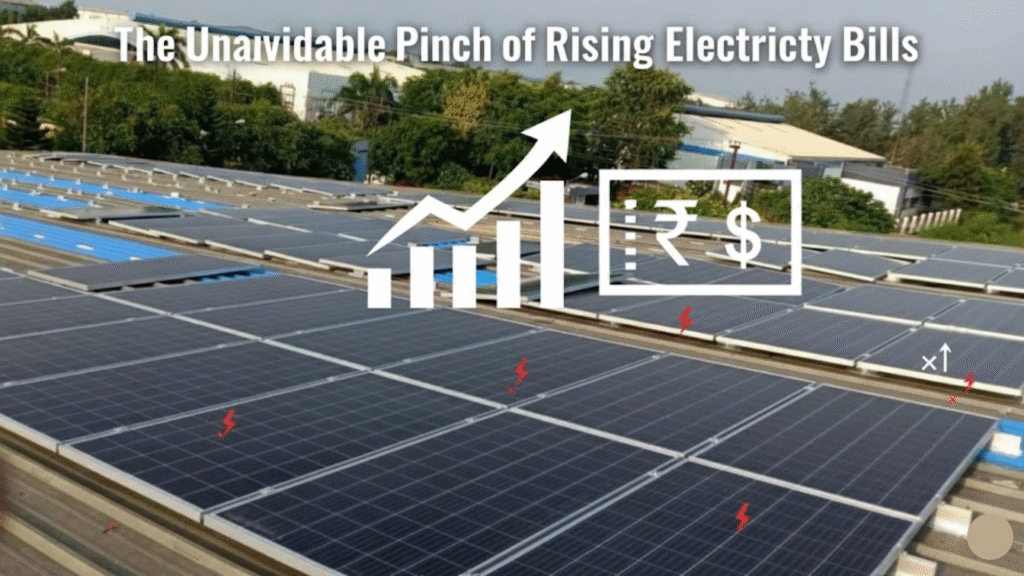
Every Jaipur resident knows the feeling of dread when opening an electricity bill after a scorching summer month. The tariffs set by Jaipur Vidyut Vitran Nigam Limited (JVVNL) have been on a steady upward trend. For domestic consumers, crossing the 300-unit threshold pushes the per-unit cost significantly higher, not to mention fixed charges, electricity duty, and other cesses.
Rooftop solar offers a direct and permanent solution to this recurring expense. It’s not just about saving money; it’s about seizing control of your energy future.
The Magic of Net Metering: In Rajasthan, the net metering policy is your best friend. Here’s how it works:
- Generation: Your solar panels generate electricity during the day.
- Consumption: Your home appliances run on this free, solar-generated power.
- Export: If you produce more power than you’re consuming (e.g., on a sunny afternoon when no one is home), the excess power is automatically exported to the JVVNL grid.
- Credit: The grid acts like a bank. For every unit you export, you get a credit. At night, when your panels aren’t generating, you draw power from the grid as usual.
- Billing: At the end of the month, your bill is calculated based on the net amount: (Units Imported) – (Units Exported).
Most homeowners find their bills reduced by 80-90%, often paying only the minimal fixed charges. The return on investment (ROI) is now faster than ever, with most systems paying for themselves in just 4 to 6 years. After that, you enjoy free electricity for the remaining 20+ years of the system’s life.
3. Technology is Better, Smarter, and More Efficient — Powering Rooftop Solar Growth in Jaipur
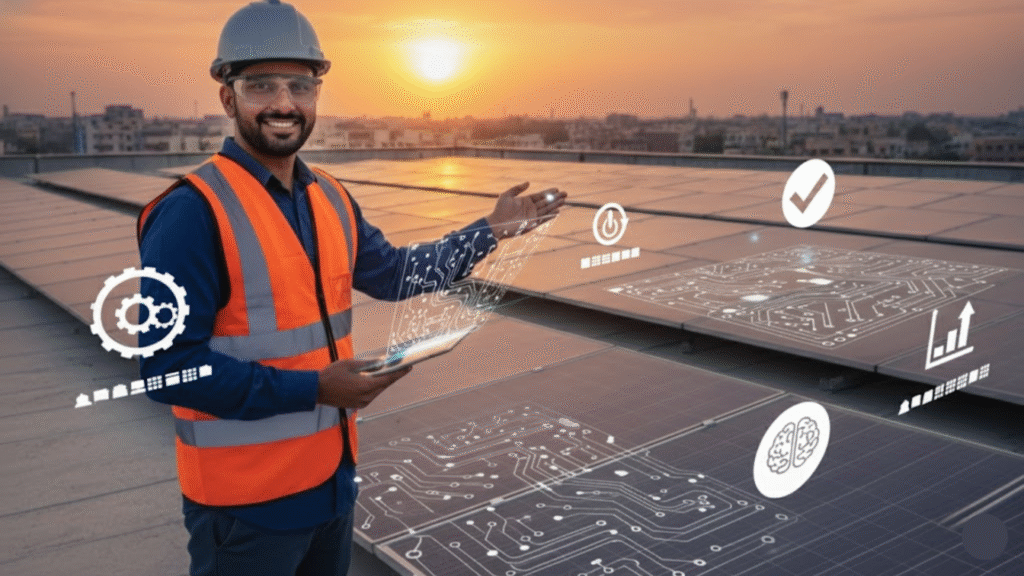
The solar panels and equipment available today are light-years ahead of what was available a decade ago. This isn’t just about making them cheaper; it’s about making them more powerful and reliable.
- Advanced Panel Technology: The market has moved towards highly efficient cells.
- Mono PERC Panels: This is the industry standard now. PERC (Passivated Emitter and Rear Cell) technology allows the cells to capture more light, especially in low-light conditions (like early mornings or cloudy days), boosting overall energy generation.
- Bifacial Panels: These revolutionary panels can produce electricity from both sides. They capture direct sunlight from the top and reflected light from the roof surface below, increasing generation by an extra 5-20%.
- Smarter Inverters: The inverter is the brain of your solar system, converting the DC power from panels into AC power for your home.
- String Inverters: The cost-effective choice for most homes with simple, unshaded roofs.
- Microinverters & Power Optimizers: These are ideal for complex roofs with shading issues, as they optimize the output of each individual panel.
- Hybrid Inverters: These are “battery-ready,” allowing you to seamlessly add a battery storage system later to have backup power during outages.
- Robust Warranties: Reputable brands now offer incredible peace of mind with long-term warranties:
- Product Warranty: Covers physical defects in the panel for 10-12 years.
- Performance Warranty: Guarantees the panel will produce at least 80-85% of its original power output after 25-30 years.
4. A Growing Wave of Environmental Consciousness Driving Rooftop Solar Growth in Jaipur
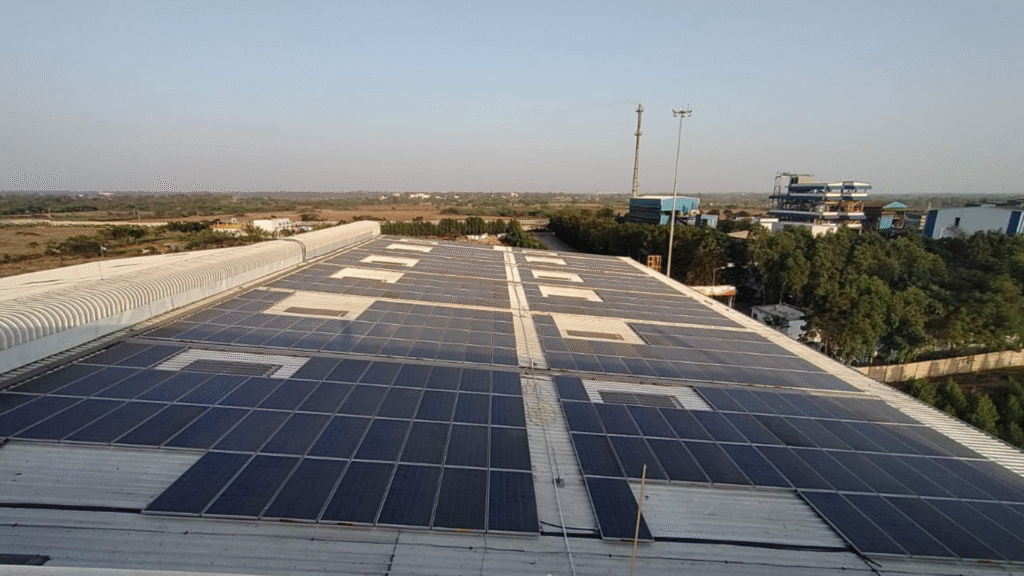
Beyond the compelling economics, there’s a powerful emotional and ethical driver: the desire to protect our planet. Jaipur is a city that prides itself on its heritage and beauty, and residents are increasingly aware of the threats posed by pollution and climate change.
Installing a rooftop solar system is one of the most impactful actions an individual can take.
- Quantifying Your Impact: A standard 3 kW rooftop system in Jaipur will generate approximately 4,200 units of clean electricity per year. This is equivalent to:
- Reducing CO2 emissions by nearly 4 tonnes annually.
- The environmental benefit of planting over 180 mature trees.
By going solar, you are not just a consumer; you become a producer of clean energy. You contribute to a healthier city, reduce the burden on an already strained power grid, and play a direct role in India’s journey towards its renewable energy goals. This sense of responsibility is a significant, and often underestimated, reason for the rooftop solar growth in Jaipur.
5. The Local Solar Ecosystem is Strong and Accessible
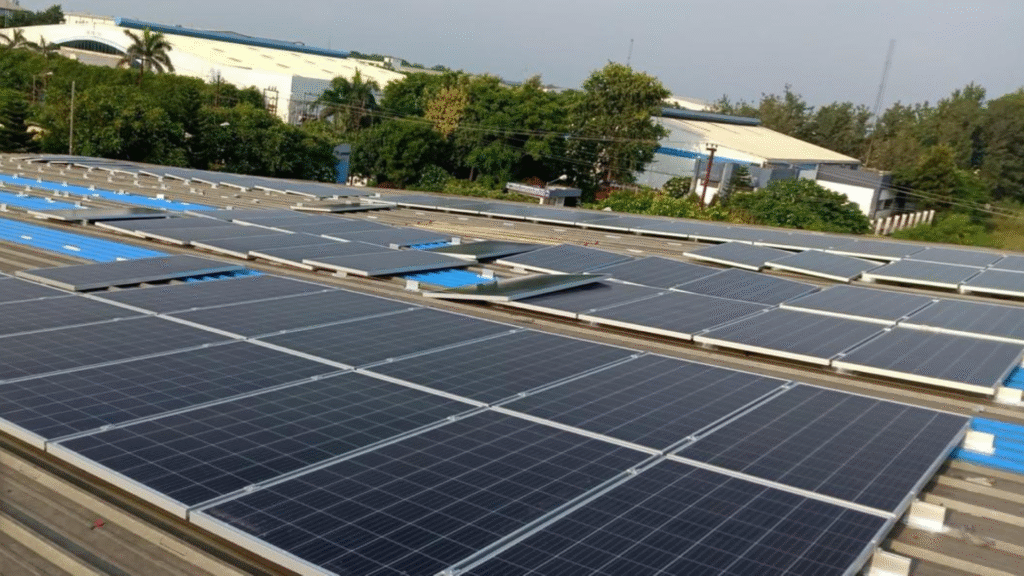
The final piece of the puzzle is accessibility. A decade ago, finding a trustworthy solar installer was a difficult task. Today, Jaipur has a thriving ecosystem of certified, experienced solar companies.
This mature market provides homeowners with a seamless, end-to-end experience. Here’s what the typical solar journey looks like now:
- Consultation & Site Survey: An expert visits your home to assess your roof, understand your energy needs, and check for shading.
- System Design & Proposal: You receive a detailed proposal with the recommended system size, equipment choices, and a clear financial breakdown, including subsidy calculations and ROI.
- Hassle-Free Paperwork: The solar company handles all the complex paperwork, from applying on the National Portal for the subsidy to securing the necessary approvals from JVVNL.
- Professional Installation: A trained team installs the entire system, including panels, inverter, and safety equipment, adhering to all safety standards.
- Net Metering & Commissioning: The company coordinates with the electricity department to replace your old meter with a new bidirectional “net meter” and officially commissions the system.
This professional support system, combined with the availability of solar loans and EMI options from most major banks, has removed the operational headaches and built a foundation of trust.
The Future is Bright on Jaipur’s Rooftops: The Next Chapter of Rooftop Solar Growth in Jaipur
The conclusion is undeniable. The powerful combination of government subsidies, soaring electricity tariffs, advanced technology, environmental stewardship, and a robust local industry has created the perfect conditions for the rooftop solar growth in Jaipur to flourish.
For the residents of the Pink City, this is more than just an energy trend. It’s a declaration of independence—from volatile energy prices, from polluting fossil fuels, and towards a future that is both financially smart and environmentally sound. The rooftops of Jaipur are not just changing their colour; they are powering a brighter, cleaner tomorrow.
Frequently Asked Questions (FAQ)
1. What happens to my solar system during a power cut? Standard grid-tied solar systems are designed to shut down automatically during a power cut for safety reasons (to prevent sending power back to the grid while workers are repairing it). If you need backup power, you would need to install a hybrid system with battery storage.
2. How much maintenance do solar panels really need? Solar panels are incredibly low-maintenance. The best practice is to clean them with water every 2-3 weeks to remove dust and bird droppings, which ensures they operate at peak efficiency. Most installers also offer annual maintenance checks.
3. Will installing solar panels damage my roof? No, quite the opposite. When installed correctly by a professional team, the mounting structures are sealed to be completely waterproof. The panels actually act as a protective shield for your roof, protecting the section underneath from direct sunlight and rain, which can extend its life.
4. Can I get a bank loan or EMI facility for my solar system? Yes, absolutely. Most nationalized and private banks in India recognize rooftop solar as a home improvement project and offer attractive loan and EMI options. Your solar installer can often help you with the necessary documentation.
5. What is the total lifespan of a rooftop solar system? The core components are built to last. Solar panels have a performance warranty of 25-30 years, but can continue to produce power for much longer. The solar inverter, which is the hardest working part, typically has a warranty of 5-10 years and may need to be replaced once during the system’s lifetime.


